Say the name Edson Arantes do Nascimento and many football fans will know his name.
But say the name Pele, as he was better known, and the whole world knows who you are talking about.
The debate raged during this year’s Qatar World Cup about who is better between Lionel Messi or Cristiano Ronaldo.
A quick scour of social media or YouTube will show you clips with fervent fans laying claim that their respective favourite should be hailed as the greatest of all time.
The same question has been asked about the legendary Brazilian Pele and Argentine Diego Maradona.
Two of the best to ever lace up a pair of football boots for sure.
Maradona was sensational but Pele was a man who transcended the beautiful game.
Ask a fan to name his best goal and there’s a good chance they will tell you all about a fictional one, his overhead kick in the movie Escape To Victory.
You know the one. Pele, battered and bruised but not beaten by the treatment he has suffered in the game, returned to the field to score a spectacular and iconic goal.
Even if they mention a different one you can guarantee those iconic slow-motion replays of his goal for the prisoners of war against the Germans will be deeply ingrained regardless.
A superstar who burst onto the international scene at the age of just 17, Pele rose to prominence in the 1958 World Cup finals in Sweden.
He went on to win three World Cups in a glittering career, which featured two decades of club football in Brazil with Santos before he ended his career at New York Cosmos of all places.
Former Don faced Pele in his final game for New York
His final game came in the Soccer Bowl final in August 1977 in Portland Oregon against Seattle Sounders.
Former Aberdeen striker and co-manager Jocky Scott had the honour of being in the opposition line-up and he came mighty close to upstaging the legend on his final appearance.
With the scores level at 1-1, Scott fired in an effort that hit the crossbar and Tommy Ord netted from the rebound – but the effort was chalked off for offside.
Cosmos went on to beat the underdogs 2-1 to ensure Pele’s big farewell was a winning one.
Scott said: “We played well that day and in the end we were unlucky to lose the final 2-1.
“They were a team of world stars and, as well as Pele, they had Carlos Alberto, Franz Beckenbauer and Georgio Chinaglia, the Italian international.
“We had a couple of big names like Mike England and Jimmy Robertson but, for the most part, we were a team of free transfers and lower league players from England.
“But we had a good season and we were definitely unlucky in that final.”
Pele’s talent was clear for all to see
Pele’s best was behind him, but the honour of facing him was one Scott savoured.
He said: “The likes of Pele and Beckenbauer were past their best but they were still fantastic players to be up against.
“Pele couldn’t run any more but, when they got the ball to him, he was something to see.
“His touch was perfect and for all he wasn’t the biggest, when he got the ball he was so strong he wasn’t going to part with it until he wanted to.
“I played against him and the Cosmos three times that season and, when they came to Seattle, I scored the only goal to win the game.
“When we went to New York they gave us five but just being on the same pitch as these people is a special memory.”
The summer of Pele in Scotland
Scott had the honour of lining up against Pele in his final game but their paths would cross again after both had hung up their boots.
This time Scott was on home territory with Pele turning up in, of all places, the then Aberdeen co-manager’s home ground Pittodrie Stadium.
It was June 1989 and Scotland had been given the honour of hosting the Under-16 World Cup.
The ambassador for the tournament was the great man himself and he was only too happy to show off his skills to a group of children, including pupils from Mintlaw Academy, at the home of the Dons.
Scott and his fellow Dons coach Drew Jarvie were in attendance for the special occasion where Pele posed for pictures, signed autographs and even had time to play keepy-ups with Scotland manager Andy Roxburgh.
Pele made other appearances including a trip to Dens Park, home of another of Scott’s former clubs, Dundee.
Pittodrie was one of the venues used for the tournament and Group B matches between Brazil, East Germany, Australia and the United States were held at Pittodrie.
The summer of 1989. Pele at Pittodrie. It feels like a fever dream but it really happened.
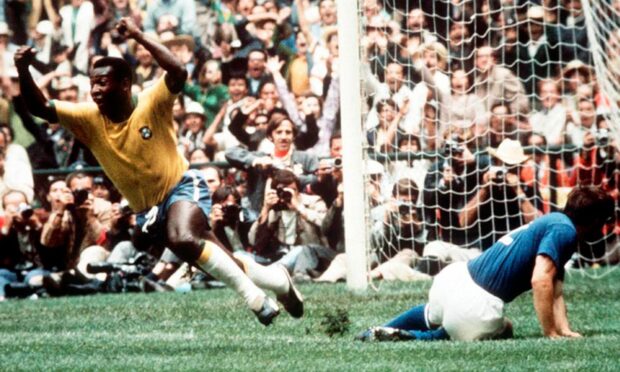
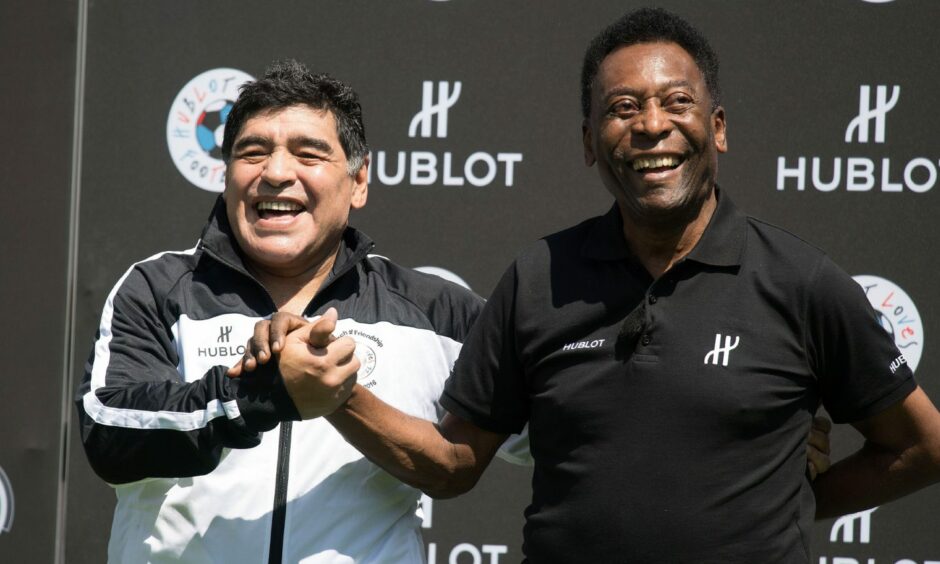
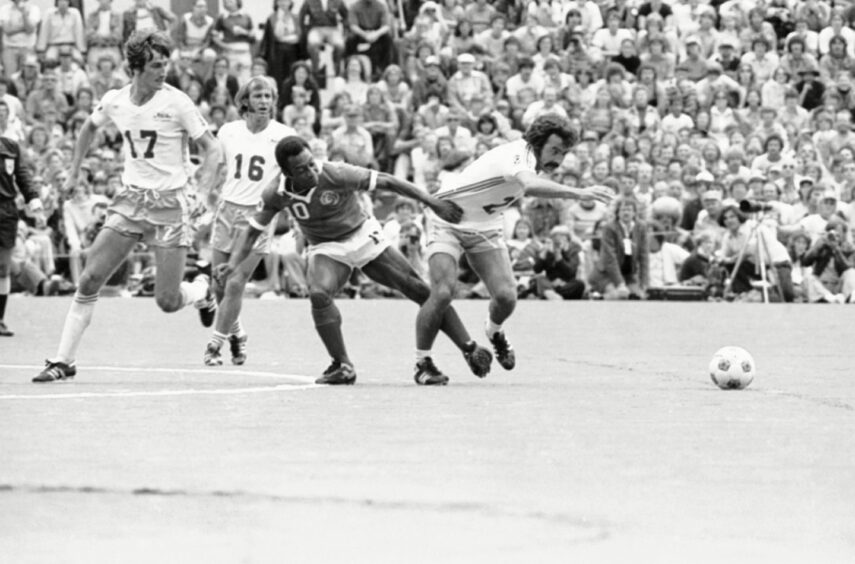
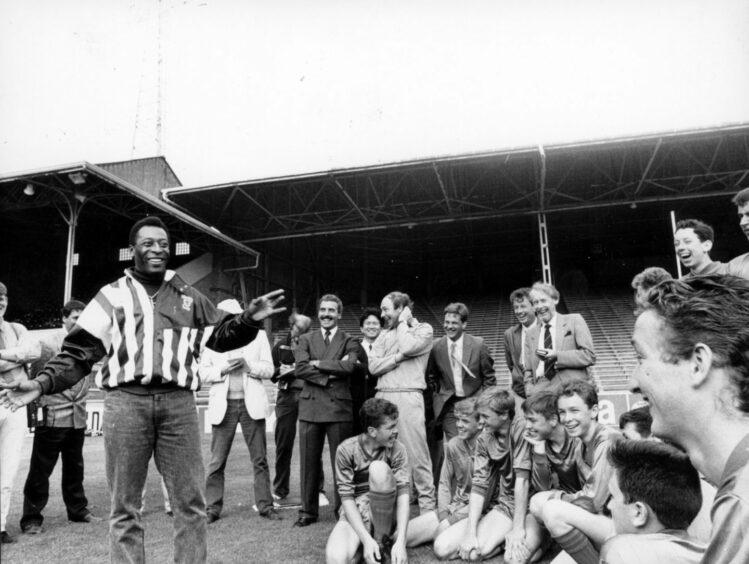
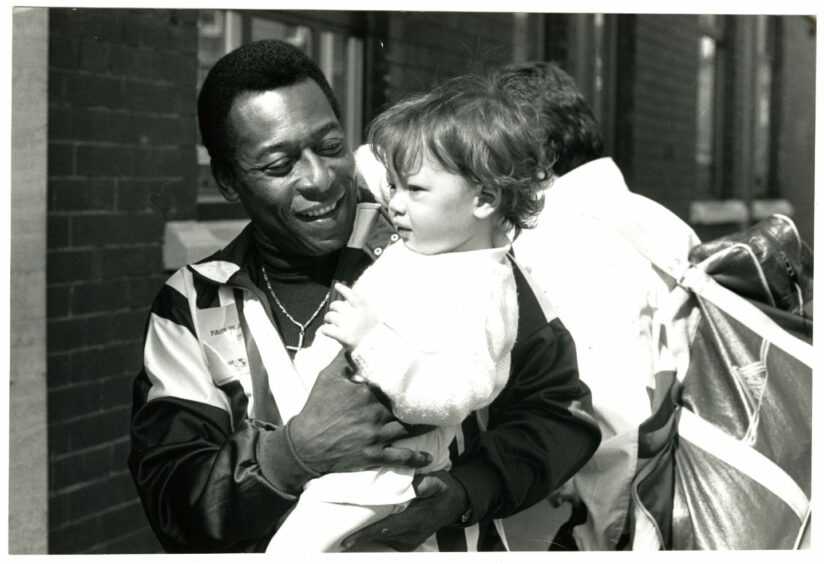
Conversation